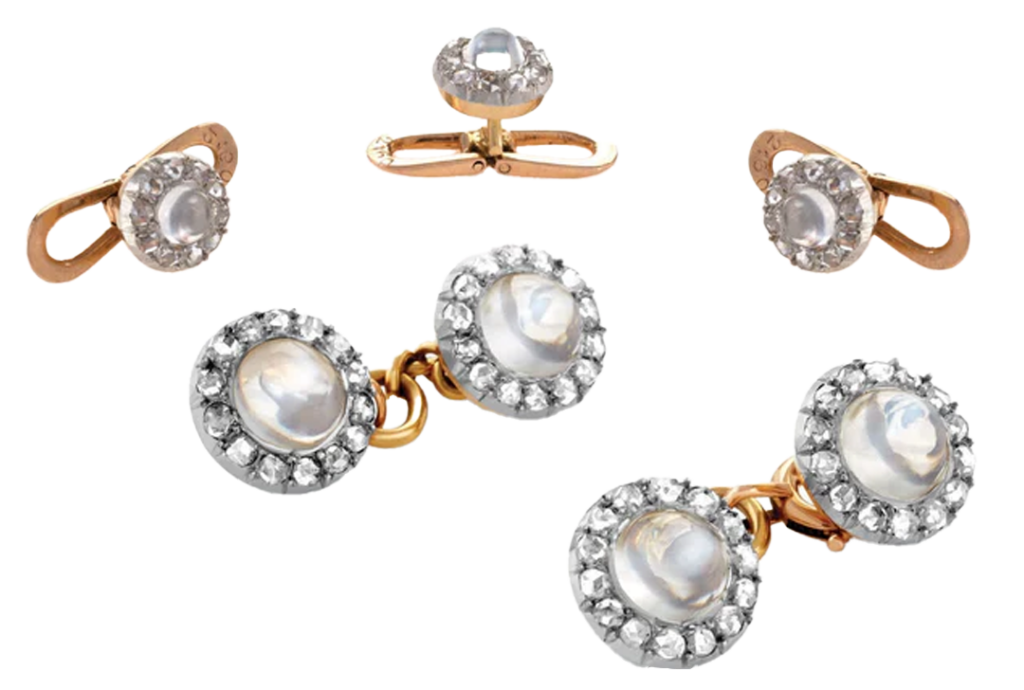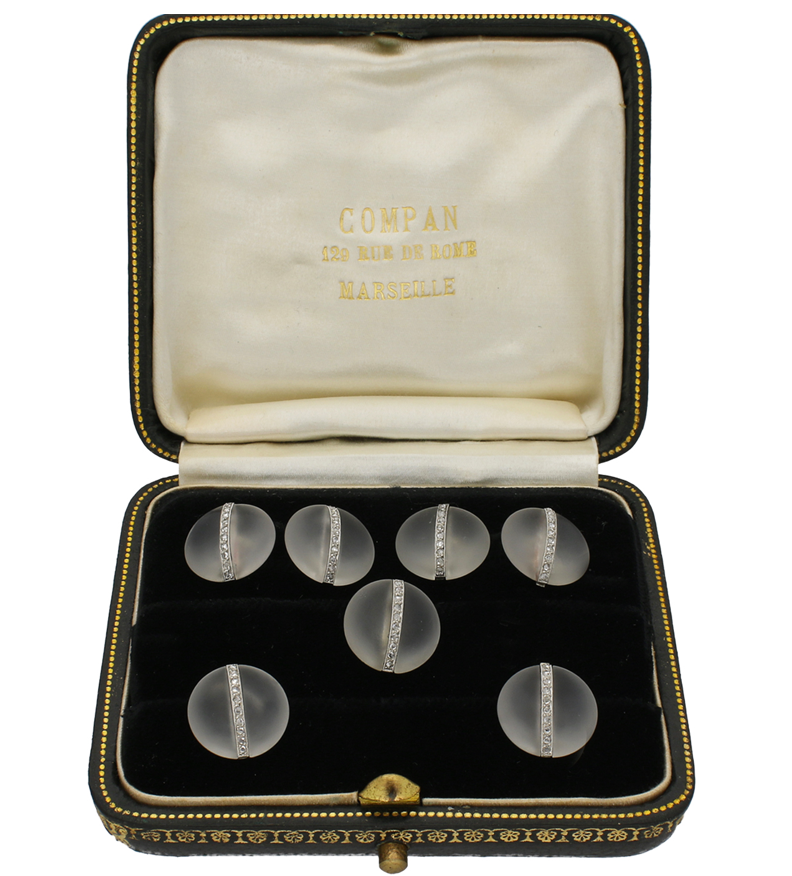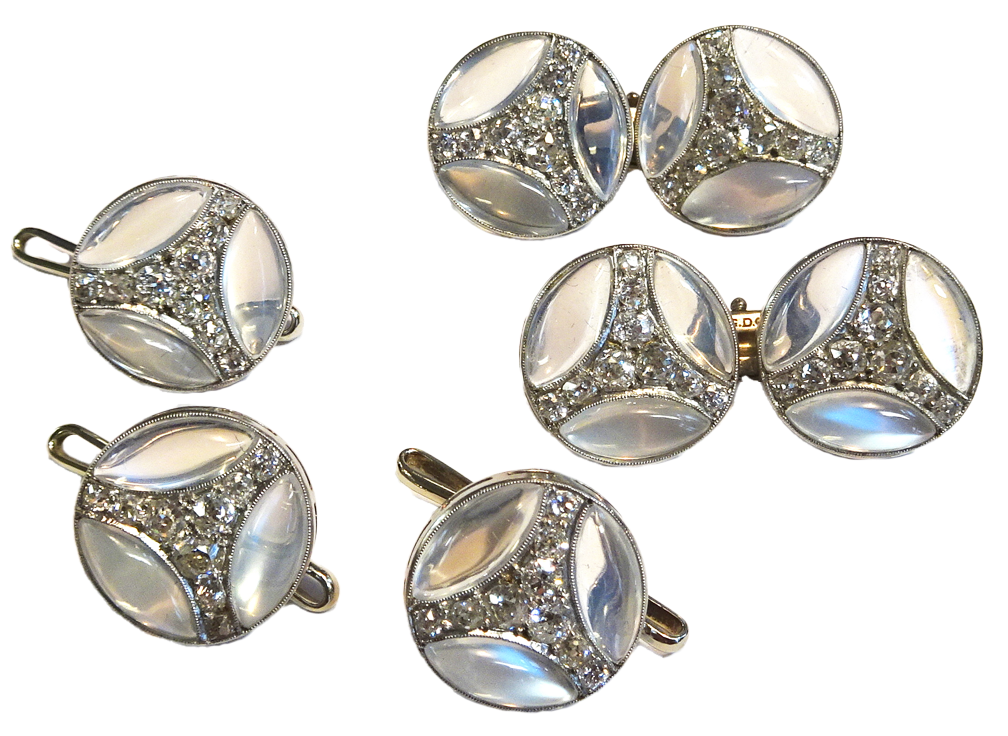When we think about jewelry, we mostly think about women dripping in diamonds and other fabulous gems. But we rarely consider men’s jewelry. Today, men can wear anything they want from traditional cufflinks and shirt studs, to brooches and pearl necklaces. However, there was a time when men’s jewelry was made for practical reasons, which led to more decorative and fashionable pieces.
The Starched Collar
Oddly, it was starch that sparked the early use of dress sets for men. In the mid 1800s men’s fashion was more formal and strict rules dictated what was worn. The Industrial Revolution was well underway and a burgeoning wealthy middle class society was shaping up and it molded how men dressed as they made an effort to show their new found wealth discreetly.
In the middle 1800s, it was fashionable for men to wear highly starched collars that stood at attention and didn’t move, even in a strong gust of wind. The collars were detachable from the rest of the shirt so they could be properly cleaned and starched. Once the collars were starched and reattached to the softer fabric, the shirt looked a little bit rumpled and that was not to the liking of fashionable men.
To correct the situation, men began to have their shirt fronts starched to create a more overall crisp look. These overly starched shirt fronts presented a new challenge: They were so stiff that it was next to impossible to button the shirt. So what was the well-appointed man supposed to do? The answer: Shirt studs, which were used in place of buttons. By the mid 1800s shirt studs were a trending style for men.
What is a Shirt Stud?

A shirt stud is comprised of a decorative button style module attached to either a flat disk by a small link chain or to a rigid metal bar, which were then inserted into two slits in the shirt, where they acted as a closure. In the Victorian era, men’s shirts pulled over their heads and only had two or three buttons which is why shirts studs come in sets of two or three. It was a rather conservative time and men wanted to look put together, but not flashy so early shirt stud designs were classic and restrained. During the Edwardian era, in the early 1900s, which was an even more formal time, shirt studs continued to be an important part of a gentleman’s wardrobe when they attended balls and other social events. By now the dress set was introduced and it included two or three shirt studs and a matching set of cufflinks. These accessories had also become more decorative incorporating gemstones into the design especially pearls, mother of pearl and moonstone, sometimes accented with diamonds, rubies or sapphires.
Dress Sets Reflect Art Deco Glamour
The Art Deco era of the 1920s and 1930s was a very glamourous time and people dressed up to go to nightclubs, speakeasies and parties. Men had to have the right look to accompany women who were stunning in satin gowns, furs and loads of jewelry. As a result, men were expected to wear their tuxedos or other formal attire that fit into the sumptuous décor and dress codes of some of these venues. The dress set was a necessity for the well-dressed man. During the Art Deco years, platinum or white gold, sometimes embellished with gemstones, were considered “proper” materials for these sets. Pearls were a popular choice for shirt studs as they blended into white shirts. As the 1930s approached black enamel, rock crystal, onyx and colored gemstones became more fashion forward. And these matching sets of evening jewelry were promoted by the Newark, New Jersey-based jewelry manufacturer Krementz, a major producer of men’s jewelry at the time.
Dress Sets, Bow Ties and Cummerbunds

In some instances when men were wearing formal clothes, they were advised to match their cufflinks and shirt studs to another matching set: their bowtie and cummerbund. By having the accessories match, it created a more formal look.
After World War II, pearls continued to be popular for dress sets for white tie events, but black tie called for mother-of-pearl or onyx. By the 1960s fashion had loosened up. The matchy-matchy look of earlier years was being replaced with a freer mix and match style. Yet dress sets, remained just that a matching set. But the restraints on what was proper to wear were lifted and men began to wear dress sets that expressed their personality.
While we don’t see dress sets worn all that often anymore, who can forget the debonair Fred Astaire twirling Ginger Rogers around the dance floor without a wrinkle or a movement in his shirt that was beautifully held in place by one single shirt stud.
Featured image (top of page): Ginger Rogers and Fred Astaire, “The Gay Divorcee”, Picturegoer Magazine, 1935.
Authored by Amber Michelle


